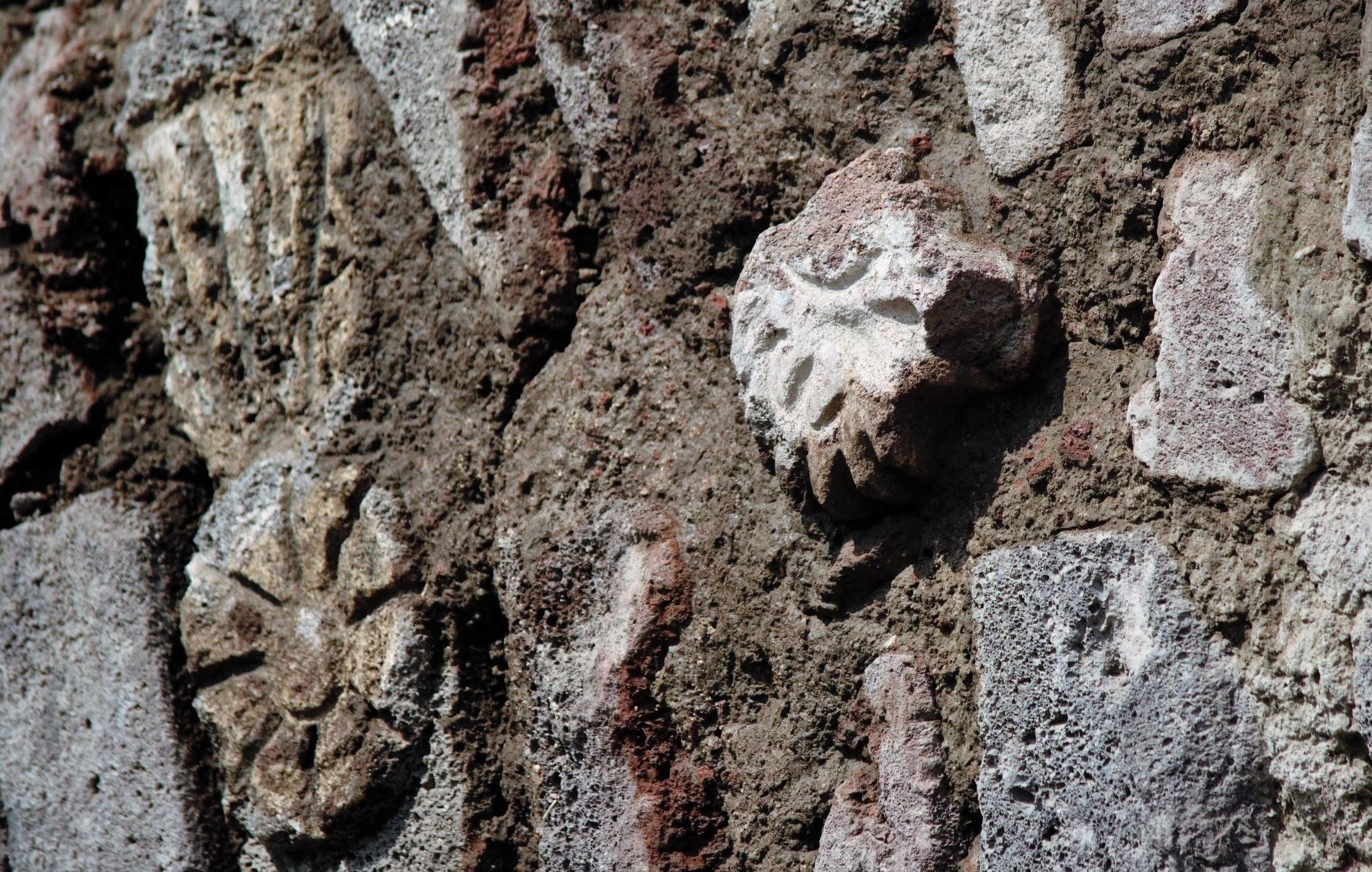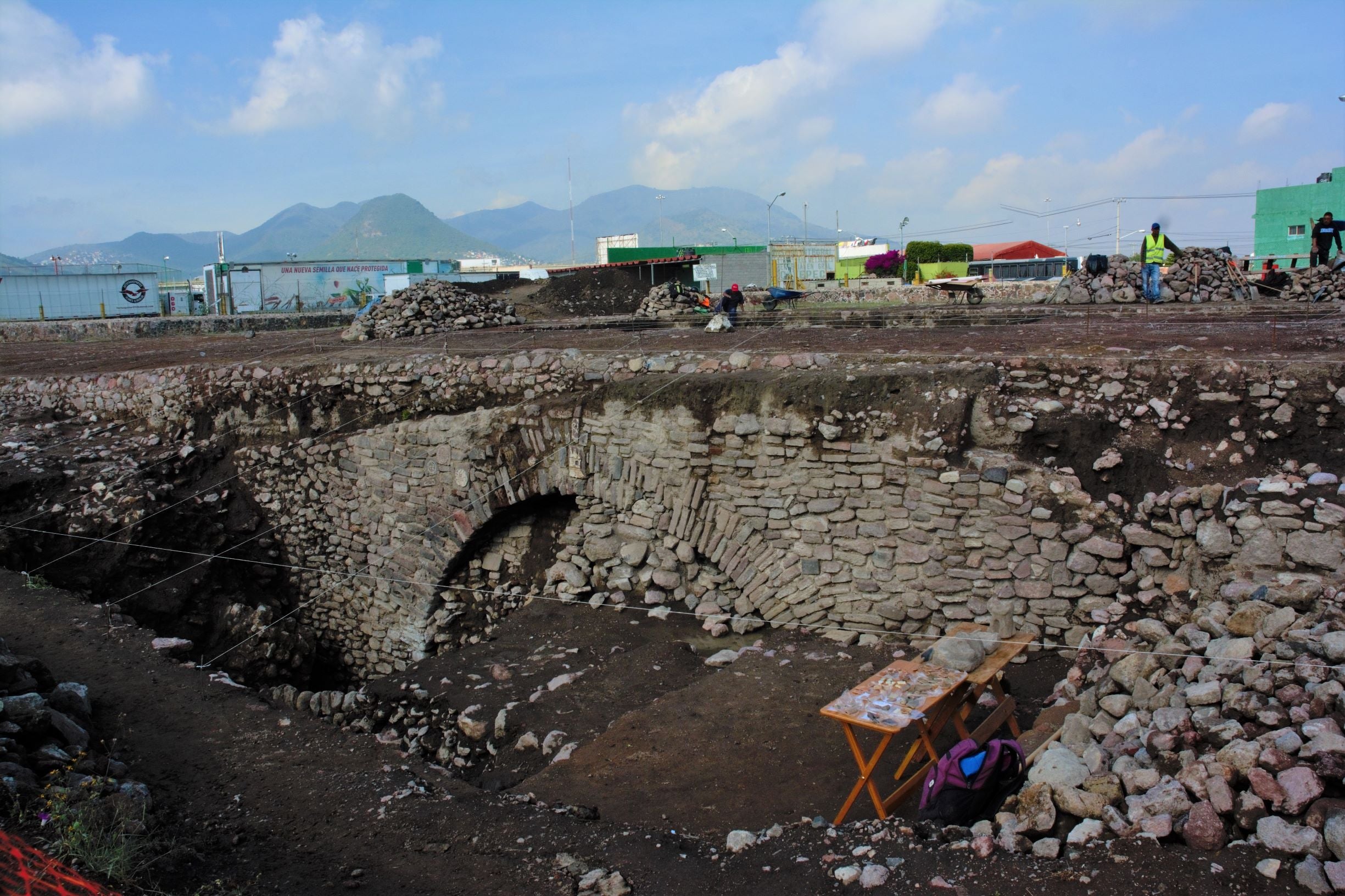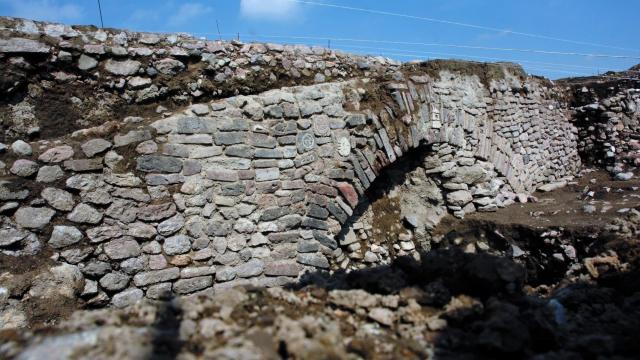In October 2019, Mexican archaeologists found intriguing reliefs carved around a sluice gate of a 5 km-long, 400-year-old tunnel under the outskirts of Mexico City. But now, the museum that orchestrated the dig says the archaeologists will need to cover up the amazing finds, as the museum lacks the funds to properly safeguard the site as an exhibit.
The museum — the National Institute of Anthropology and History (INAH) — ascribed the reburial to losses suffered due to the covid-19 pandemic. “It must be considered that the world-wide COVID-19 health emergency forced all levels of government to place priority on assigning money to health care for the population. For that reason, the archaeological project had to be postponed,” the museum statement read, according to the AP. The museum hopes that putting dirt back on top of the Indigenous artworks — which adorn a sluice gate from the early 1600s, part of early colonial Mexico City’s extensive flood control infrastructure — will be enough to keep it safe until someone has the means to properly build an on-site exhibit for the public.
The most remarkable artifacts found at the tunnel entrance were carved images of animals, gods, and other iconography, Mexico News Daily reported at the time, though nails and some of the original wood of the gate were also uncovered. Depictions of a bird’s head, raindrops, a war shield, and a temple structure were among the excavated artworks.

The images were petroglyphs — carvings in stone — and stucco panels, and though the designs were pre-Hispanic, they were made on a tunnel more indicative of European construction, INAH said in a statement. That suggests that Indigenous workers from the area likely helped construct the dam, said Raúl García Chávez, the National Institute of Anthropology and History’s lead archaeologist on the site, in an interview with Live Science.
Museum archaeologists said the temple carving was likely a dedication to the Aztec rain god Tláloc. The allusions to water were probably intentional, as the tunnel was one opening of a 17th-century dike system that was built to manage water levels in the area and avoid flooding. The dike held fast for 20 years but couldn’t handle a disastrous flood in 1629, which inundated the tunnels for five years; colonial rulers in what was then New Spain then covered up the gate, Chávez told Live Science.

The archaeologists from INAH initially planned to move the stone and stucco artworks to a local community centre and to replace them with replicas in the eventual exhibit at the site, which would allow members of the public to walk into the tunnel and see the scale of the system up close. But all that is on hold now, as archaeologists go about undoing their work of the last two years. Hopefully, someone in the future has the means to dig it all up again.
More: Temple Dedicated to Aztec God of Sacrificial Flaying Uncovered in Mexico
